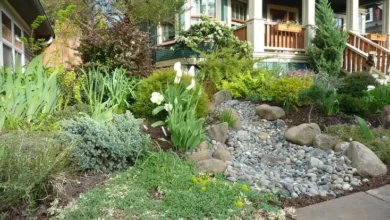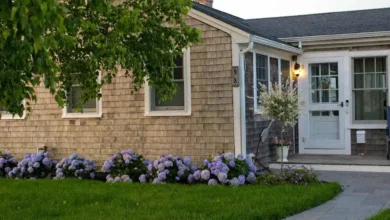8 Best Ideas Building a Rooftop Garden
With the number of urban areas constantly rising, the little gardener in you keeps shrinking. Many have turned their rooms into small botanical gardens; however, at a certain point in time, they find themselves space-limited. What they are unaware of is that there’s probably an additional area they can take advantage of to create an outdoor living space. A rooftop garden can sustain even the tiniest roofs and bring colour to bare, dull, and unused outdoor surfaces.
Table of Contents

Not only are they eye-appealing, but they also insulate your roof and provide extra wildlife habitat in this cement-filled world.
Don’t skip the legal part
The first step, one you should take before starting with the project, is contacting local ordinances, home owner’s associations, or find out how rental property rules view a rooftop garden, since they might be prohibited in your area, or might require special treatment.
Check whether your roof can take it
Next, it is of utmost importance to hire a contractor or an architect, since you’ll be needing them every step of the building process. They’ll be the ones who will provide the best advice on whether the roof is safe to build a garden since certain constructions are not designed to withstand the additional weight. If the roof is slightly damaged, roof restoration Sydney experts emphasize the importance of calling for professional help before continuing with the process.
Even if it shows that the building can take the extra weight, we still advise you to opt for the lightest materials possible, such as fibreglass, plastic or foam planting containers. Always go for lightweight potting soil instead of garden dirt, and Styrofoam peanuts instead of rocks and pottery shards for drainage.
Ensure it is protected from the wind
Bear in mind that the wind is always stronger on the rooftop than down on the ground, so don’t forget to incorporate trellises or some other latticed windbreaks. These will not stop the wind completely but will disrupt the flow, which makes them more effective since the solid ones tend to break and cause damage to your rooftop garden.
Think about watering in advance
Like any other regular garden, this one, as well, will require a lot of water. Dragging buckets will be far from practical, so plan on either installing an automatic watering system or building a water storage system.
Rooftop Garden Sun exposure
Before we move on to planting, you need to have a good idea of the seasonal sun exposure and shade variations in your area. The exposure to the sun is what dictates what kind of plants, veggies or flowers you will be able to grow. Naturally, Rooftop Gardens receive a lot of sunlight (especially in Australia), which is ideal for vegetables, as they need to be at least 6 hours in direct sunlight. Still, if you live in a small apartment building whose rooftop does not receive enough sunlight because the adjacent building blocks it, opt for kale, spinach and lettuce, since they can grow in the shade.
Get the right materials
We advise using cultivars of sedum to create a rich tapestry of gold and red in a Rooftop Garden – coral reef, Angelina and spirit since these are tolerant to drought and will form a dense mat of succulent foliage. You’ll also need around 1.5×2.5 meters of space to grow them, plywood and a plastic liner. From tools, make sure you have a hammer and drill by your side, as well as perlite, insulation and general compost.
Planting phase and aftercare
Start by cutting plywood that is the same size as the roof area and cover it with a plastic liner. Nail it to the roof, and move on to creating a 5-centimetre deep wooden planting frame by fastening planks of wood to each roof edge. This way you will form a sturdy framework you will need to fill with a mix of insulation, perlite and compost.
Make the holes at the bottom of the frame to promote good drainage, and then push the insulation in them to create the filter and prevent the compost from draining out. Plant the sedums into the medium, just remember – these plants are not fans of wet roots, so when the winter comes, clear the leaves that fall on the plants regularly and check whether the drainage holes are still open.
The bottom line
Just like a regular garden, a Rooftop Garden includes a lot of planning and work to get it to thrive. For this reason, follow the clearly outlined steps above, and once you have a structural plan set up, rest assured you’ll be having your personal oasis of peace on that small, forgotten building rooftop.




